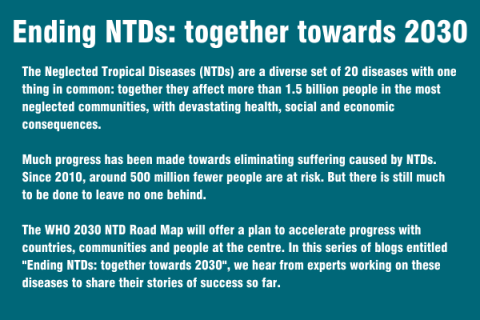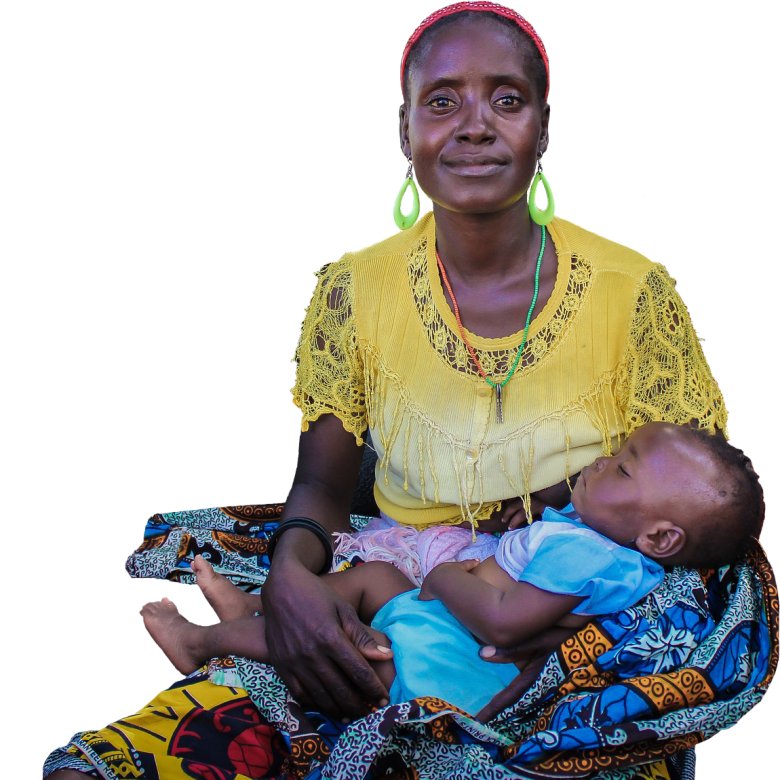Guinea Worm: the last mile

Guinea worm (dracunculiasis) infection is classically acquired by humans following ingestion of infected water fleas (Cyclopidae: Cyclops and Mesocyclops) while drinking from surface water bodies. Caused by the nematode worm, Dracunculus medinensis, it was known as the “fiery serpent” for centuries.
The Global Guinea Worm Eradication Programme (GWEP) commenced in the late 1980s as part of the International Water Decade.
The programme to eradicate the disease was driven by Dr Donald Hopkins of the Centers for Disease Control, who, at an early stage, enlisted President Jimmy Carter, and his Carter Center Foundation, as the key advocate for the programme. This brought the attention of the health community to this truly neglected disease affecting the poorest rural communities, which existed through India, Pakistan and Yemen in Asia and in many countries in Africa.
Incredible success meant that eradication seemed to be a possibility, with 16 countries being certified as free of guinea worm
In the late 1980s there were some 3.5 million new cases each year in 20 countries considered endemic. By 2016, incredible programme success meant that eradication seemed to be a possibility, with 16 countries being certified as free of guinea worm transmission (GW).
Five countries have so far been unable to achieve the target of zero cases. Globally 54 human cases were reported in 2019, 28 in 2018 and 30 cases in 2017.
The strategy behind this success

The strategy used to defeat GW has been based on a combination of public health measures in the absence of any drug, vaccine or pre-patent live diagnostic.
One of the key measures was providing safe water through creating and maintaining boreholes equipped with pumps and filtering potentially contaminated water. Another was surveillance, including health education and regular reporting from communities and health facilities leading to case detection and containment.
This helped to prevent any infected person from contaminating a water source, with an additional monetary reward for reporting cases in places promulgated via media and other communication methods. Any rumours of GW reported require a follow up within 24 hours.

The only use of chemicals in the control measures is the use of the larvicide, temephos, to kill copepods in water bodies. These approaches have been highly successful. Only five countries remain endemic: Angola, Chad, Ethiopia, Mali and South Sudan.
The DR Congo and Sudan remain to be certified - although there has been no evidence of cases for many years, these countries need to provide robust evidence to satisfy the necessary criteria established by WHO and the International Commission for the Certification of Dracunculiasis Eradication (ICCDE) that transmission is not taking place.
Ongoing challenges
In 2018, the finding of two cases in Angola surprised the GW eradication community. Angola had never reported a case previously and was about to submit a national report to WHO.
The implications of the Angola cases are significant as the whole country must now put in place GW surveillance, compatible with matching the criteria established for certifying the absence of transmission. This represents a significant challenge in such a vast country with limited human resources.
Unfortunately, a significant complication has arisen which certainly creates a major challenge and has the clear potential to prevent the target of eradication being achieved. Since 2012, infections in animals, particularly in domestic dogs, have caused this concern. Whilst infections in dogs were recorded very occasionally in the 1930s, no animal infections had been observed since GWEP began.
However, in Chad in 2012, dog infections started to be detected in villages along the Chari River, initially in small numbers but which may not have reflected the true situation. Now over 1,900 dog infections were reported in 2019 alone.
The numbers detected have increased over seven years along some 800 km of the Chari River, where small numbers of cats are also infected. Following this discovery, and further investigations, a small number of animal infections of D. medinensis have also been found in Mali (dogs and cats), and Ethiopia (dogs, cats and baboons). Since then, single dog infections have also been reported in South Sudan and Angola although epidemiologically of less significance.

The epidemiology in Chad has been the subject of research led by the Carter Center to understand whether animal infections were a different species. Molecular studies, however, have shown beyond any doubt that dog infections are indeed D. medinensis and not a separate species.
There is, therefore, the possibility that fish, and particularly small fingerlings are acting as paratenic or transport hosts, whereby humans and dogs could acquire infection via consuming fish. Reward systems are now in place for reporting dog infections, as well as human cases, and as a control measure, infected dogs are being tethered and the safe disposal of fish entrails is encouraged.
In the global context, GW eradication is defined as “the confirmed absence of the emergence of adult female worms (defined as compatible with the interruption of transmission of Dracunculus medinensis) in humans and animals for three years or longer at the global level".
This is in line with the accepted WHO definition for any eradication programme as “global zero incidence of a specific pathogen”. Animal infections, therefore, create significant challenges for the eradication goal. The previous criterion for a visit to certify a country as free of the infection depended on at least three years absence of a reported human case. Now with animal infections, all infections must be considered.
Hence in Mali, despite having no reported human cases since 2015, dog infections have continued to be reported, albeit in small numbers.
In Ethiopia, baboons as well as dog infections continue to be found in the Gog district of Gambella Region, although in 2018 and 2019 Ethiopia did not report a human case. However, in 2020 WHO has reported six suspected GW cases in humans and more cases are under investigation in Gog.
These countries, where public health efforts have been so successful must now refocus their efforts into new area of animal health to complete their targets and ensure no further infections in animals are present.
Implications for eradication

The implications of the significant reservoir in Chad are profound. A spill-over of infection into already certified countries which border Chad is possible. These are the Central African Republic, Cameroon (where a human case was detected on the Chad border in 2019), Niger and Nigeria.
To date, fortunately, extensive searching in all countries previously certified has not found animal infections. Guinea Worm, which seemed so close to eradication 4 years ago, exemplifies the difficulties eradication programmes face in their last mile.
One of the criteria for establishing an eradication programme is the absence of animal reservoirs, as these would so clearly form an impediment to any concept of zero global incidence of candidate pathogens. The GWEP is embarking on the necessary research to seek a solution to the dog and other animal infections.
Alongside the challenges of animal infections, security problems in Mali and southern areas of Sudan prevent access to areas where Guinea Worm surveillance is needed to confirm absence of transmission.
The GWEP has been remarkably successful in reducing the numbers of human cases to a tiny fraction of pre-programme levels, reducing significantly pain and disability whilst increasing nutritional security. This is exemplified by the Dogon word for GW - “Yoro” the disease of the “empty granary”.
As we seek to not only eradicate, but make D. medinensis extinct, many more appropriate warnings also come to mind, such as “beware of the dog”, “expect surprises”, “the last mile is always the most difficult”, and “have a Plan B”. Having a Plan B could mean that we accept success if we had zero human cases for three years in a country and recognize that animal sources will always pose a minimal risk to humans, whilst investing in targeted research, and strengthening surveillance systems.
However, over the last months the spectre of COVID-19 has emerged, which could have potential consequences for the GW programme; COVID-19 is just another surprise in the long Guinea Worm eradication journey. Despite the remarkable biological differences between COVID-19 and GW, case containment and contact tracing are key interventions in both.
Basic public health interventions work
Perhaps the undoubted successes of GWEP best reflects the multiple, simple interventions, on which the programme has depended for three decades - a reminder that basic public health interventions work if effectively implemented.
References
Biswas G, Sankara DP, Agua-Agum J et al. Dracunculiasis (Guinea Worm disease): eradication without a drug or a vaccine. Phil Trans Roy Soc B. 2013;368:20120146.
Molyneux D, Sankara DP. Guinea worm eradication: Progress and challenges— should we beware of the dog? PLoS Negl Trop Dis. 2017; 11: e0005495. doi.org/10.1371/journal.pntd.0005495
Hopkins DR, Ruiz-Tiben E, Eberhard ML, et al Dracunculiasis Eradication: Are We There Yet? Am J Trop Med Hyg. 2018 ;99:388- 395. doi: 10.4269/ajtmh.18-0204.
World Health Organization, Weekly Epidemiological Record. 2019; 94: 613–628 20 December 2019, 94th YEAR Nos.
Eberhard ML, Ruiz-Tiben E, Hopkins et al. The peculiar epidemiology of dracunculiasis in Chad. Am J Trop Med Hyg; 2014 90: 61–70.
